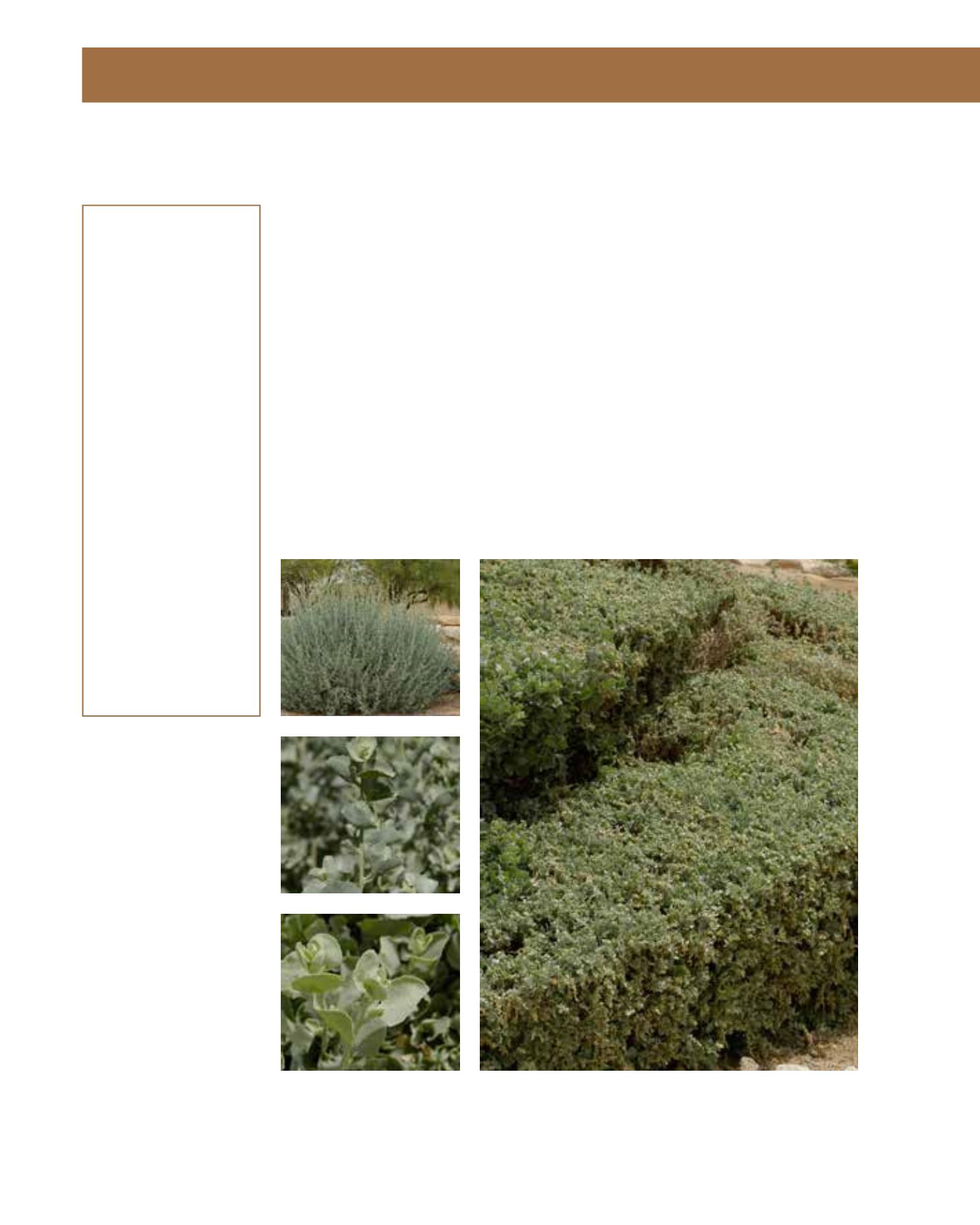

GENERAL
Origin
:
Mediterranean,
sub-tropical
Vigour
:
fast growing
Humidity
:
very arid, semi-
arid
Propagation :
cuttings, sowing
and pricking out
Maintenance :
low
CONDITIONS
Urban climate :
resistant
Dessication :
resistant
Stagnant water :
vulnerable
Irrigation
:
none, low
Salinity/ppm :
very high (30000
ppm)
Hardiness
:
-3°C
SHAPE
Type
:
shrub, sub-shrub
Height
:
0.5 m-3 m
Spread
:
0.8 m-4 m
Foliage
:
evergreen
FLOWER
Colour
:
pale yellow
Period
:
August -
September
FRUIT
Type of fruit :
capsule
Fruit size
:
0.5 cm
This is a tall, densely branched shrub, native to the coastal areas of the Mediterranean, which is
distinguished by its silvery-white stems and round, oblong to elliptical, large, silvery leaves. Its
Arabic name is qataf. Slow-growing on not too fertile, but also very alkaline, sandy or silty soil,
it has a very high salinity tolerance. The plant actually draws salt out of the soil. A very wind-
hardy plant, it requires full sun and tolerates severe conditions of drought, reportedly surviving
several years without rainfall; frost resistance is good. A. halimus is often cultivated as forage for
sheep and camels. It excretes salt through hairs on its leaves, which have a salty flavour. It is easily
propagated by seed, but germination is very sensitive to salinity and, as a pretreatment, the seeds
should be washed to remove salts from their surface and then soaked in water. Cuttings of soft
wood, or mature wood of the current season’s growth, are also possible. Deep-rooting, the plant
is suitable for erosion control of slopes and for sand stabilisation. It is also effective as an accent
plant, as a contrast with green-leaved shrubs, or for creating a screen. A. halimus can also be
clipped into topiary forms and makes a good barrier or low-growing hedge. Generally problem-
free, little maintenance is required; this shrub is at its best when given the space to grow freely.
However, to improve its appearance, for example, by cutting off the dry flowers, the plant can be
cut back into old wood, from which it quickly regrows.
61
Atriplex halimus,
Chenopodiaceae
Shrubby Orache,
raghal, qataf
















